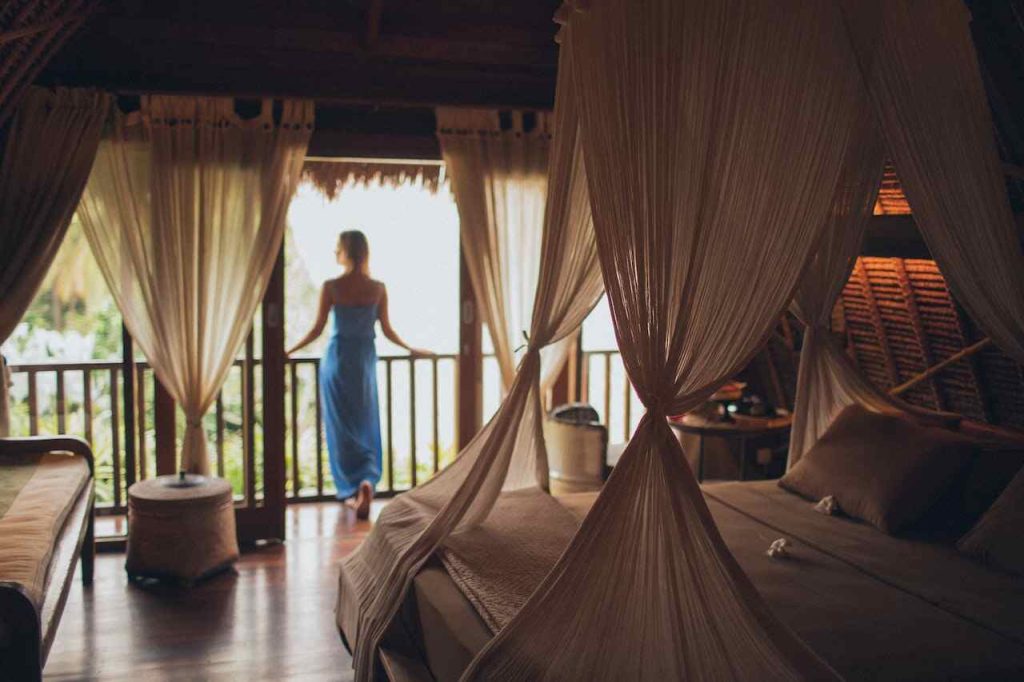Understanding Soundproof Curtains
Soundproof curtains, also known as sound-dampening or noise-reducing curtains, have gained popularity in recent years as an effective solution for reducing noise pollution and enhancing privacy in homes, offices, and various other spaces. These specialized curtains are designed to block, absorb, and dampen sound waves, creating a quieter and more comfortable environment. In this article, we will explore the features, benefits, and considerations of soundproof curtains, as well as their application in different settings.
Features and Benefits of Soundproof Curtains
Soundproof curtains are engineered using several key features that enable them to provide effective noise reduction:
1. Multiple Layers: Soundproof curtains typically consist of multiple layers of dense, heavyweight fabrics, including a middle layer of sound-absorbing material. This construction helps to block and absorb sound waves, preventing them from passing through.
2. Mass-Loaded Vinyl (MLV): Many soundproof curtains incorporate a layer of Mass-Loaded Vinyl, a dense and flexible material that adds extra mass and sound-blocking capabilities. MLV is highly effective in reducing low-frequency noises such as traffic sounds or bass vibrations.
3. Acoustic Seals: Some soundproof curtains are equipped with built-in acoustic seals or grommets, which help to create a tighter seal around the edges of the curtain. This feature minimizes sound leakage and enhances the overall noise reduction performance.
The benefits of using soundproof curtains are significant and wide-ranging:
1. Noise Reduction: The primary advantage of soundproof curtains is their ability to reduce unwanted noise. They can effectively block out external sounds such as traffic, construction, or neighborhood disturbances, providing a quieter and more peaceful indoor environment.
2. Privacy Enhancement: Soundproof curtains offer an added layer of privacy by preventing sound from escaping the room and reducing the transmission of conversations or other private activities. This feature is particularly beneficial for offices, conference rooms, or shared living spaces.
3. Energy Efficiency: Soundproof curtains have thermal insulation properties that can help to regulate room temperature. By reducing sound infiltration, they also minimize drafts and air leakage, resulting in improved energy efficiency and potential energy cost savings.
4. Versatility and Aesthetics: Soundproof curtains come in various styles, colors, and designs, making them versatile for different interior décor themes. They can be customized to fit different window sizes, and some manufacturers even offer options for personalized prints or patterns.
Considerations for Choosing Soundproof Curtains
When selecting soundproofing curtains, it is important to consider several factors to ensure optimal performance and suitability for your specific needs:
1. Soundproofing Rating: Pay attention to the Sound Transmission Class (STC) rating or the Noise Reduction Coefficient (NRC) of the curtains. Higher ratings indicate better soundproofing capabilities. Look for curtains with an STC rating of 20 or above for significant noise reduction.
2. Curtain Size and Coverage: Measure your windows accurately to determine the required size and coverage of the curtains. Ideally, the curtains should extend beyond the window frame to create a seal and minimize sound leakage.
3. Curtain Thickness and Material: Thicker and heavier curtains tend to provide better soundproofing. Look for curtains with multiple layers and dense materials such as velvet, suede, or polyester blends. Additionally, consider curtains with MLV layers for improved noise reduction.
4. Installation Method: Check if the curtains come with easy-to-install hardware, such as hooks, grommets, or rod pockets. Ensure that the chosen installation method aligns with your window type and preference.
5. Maintenance and Cleaning: Review the manufacturer’s instructions for cleaning and maintenance. Some soundproof curtains may require special care H2: Application of
Soundproof Curtains
6. Soundproof curtains have a wide range of applications in various settings:
7. Residential Spaces: Soundproof curtains are commonly used in bedrooms, living rooms, and home theaters to create a more peaceful and enjoyable environment. They can help minimize external noises and ensure a restful sleep or enhance the audio experience during movie nights.
8. Offices and Workspaces: Open office layouts can be prone to noise distractions, affecting productivity and concentration. Soundproof curtains can be used to create private workstations or partition areas, reducing noise disturbances and improving focus.
9. Hotels and Hospitality: Soundproof curtains are essential in hotels to provide guests with a quiet and relaxing stay. They help block out external noises and maintain privacy within the rooms, ensuring a comfortable and undisturbed experience.
10. Educational Institutions: Schools, universities, and libraries can benefit from the use of soundproof curtains in classrooms, lecture halls, and study areas. These curtains can help create a quieter environment conducive to learning and concentration.
11. Entertainment Venues: Soundproof curtains are often used in concert halls, theaters, recording studios, and broadcasting rooms to minimize sound reflections and external noises, ensuring optimal sound quality and performance.
12. Healthcare Facilities: Hospitals, clinics, and medical offices require a calm and peaceful environment for patient comfort and confidentiality. Soundproof curtains can help reduce noise distractions and ensure privacy in waiting areas, examination rooms, and treatment spaces.
Conclusion
Soundproof curtains are a practical and effective solution for reducing noise pollution and enhancing privacy in various settings. With their multiple layers, mass-loaded vinyl, and acoustic seals, these curtains effectively block, absorb, and dampen sound waves, providing a quieter indoor environment. The benefits of soundproof curtains extend beyond noise reduction, including enhanced privacy, energy efficiency, versatility in design, and thermal insulation properties.
When choosing soundproof curtains, consider factors such as soundproofing rating, curtain size and coverage, thickness and material, installation method, maintenance requirements, budget, and customer reviews. By selecting the right soundproof curtains, you can significantly improve the quality of your living or working space, ensuring a peaceful and comfortable atmosphere.
Investing in soundproof blackout curtains is a worthwhile decision for those seeking to create a quieter and more private environment, free from the disturbances of external noises. Whether it’s for a residential space, office, hotel, or any other setting, soundproof curtains offer a practical and aesthetically pleasing solution to enhance your overall well-being and enjoyment of the space.
